
HISTORY: HONORING THE LIFE OF WWII COMBAT NURSE KATHRYN DOLLASON LA CHEVE: THE LATEST ADDITION TO SUMMERVILLE’S GROWING CULINARY SCENE OPENS Q&A SC REP. HARRIET A. HOLMAN / TEA ROOM TRADITION IN THE LOWCOUNTRY




HISTORY: HONORING THE LIFE OF WWII COMBAT NURSE KATHRYN DOLLASON LA CHEVE: THE LATEST ADDITION TO SUMMERVILLE’S GROWING CULINARY SCENE OPENS Q&A SC REP. HARRIET A. HOLMAN / TEA ROOM TRADITION IN THE LOWCOUNTRY


Live music on the lawn
Scavenger hunts
Beer & wine for purchase
Lawn chairs and picnics welcome
Free Drayton Hall members
Tickets: $15 adults, $5 children, children under 7 free

April 5 May 24 September 20 October 11 November 8


Novelist Lorna
crafts an atmosphere of elevated suspense and richly textured characters
The extraordinary life of a Lowcountry native daughter is an inspiring tale of a woman ahead of her time, whose legacy endures.
The season's colorful fruits add a burst of local flavors that light up every bite
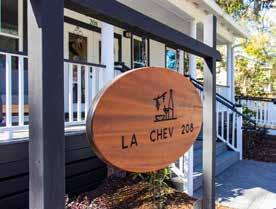






Photographed by Stephanie Selby
Dear Readers,
As I write this, the Southern sun streams through my office window, reminding me that spring is just around the corner. It's my birthday and I find myself in the midst of our pre-print frenzy for this, our beautiful Spring issue. This moment of pause amidst the whirlwind has me reflecting on a life that is slowly becoming more integrated and a heart that is immensely thankful for this "crazy thing called life" (showing my age with that one?).
Like many of you, I struggle to balance the demands of work, the richness of relationships, the necessity of self-care, the pull of creativity, and the pursuit of joy. It's a delicate dance, isn't it? One that requires grace, patience, and a whole lot of heart.
Sitting down with local author Lorna Hollifield brought to mind a phrase that has deepened in meaning for me over the years: "Bloom where you're planted." As someone who has always embraced change - even sought it out - I've come to understand that sometimes the most profound growth happens right where we are.
As Lorna spoke about feeling rooted in our shared home town, Summerville and the atmosphere she creates in her work as she brings her characters to life she, noted "climate is everything." That resonated with me. Not just in terms of our beloved Southern weather, but as a metaphor for the environments we create in our lives. How often do we look outward for change when the real call is to bring more awareness to our current surroundings?
I've learned that there's immense power in being fully present in each experience, in doing the work that's right in front of us, in expressing gratitude for what we have, and leaning into the now. It's about finding the extraordinary in the ordinary, the beauty in the familiar.
As we usher in this season of renewal, I invite you to join me in this reflection. Let's celebrate the unique 'climate' of our lives - the relationships that nurture us, the work that fulfills us, the moments of quiet joy. Let's commit to blooming right where we are planted, rooting deeply but reaching skyward to create a landscape of beauty and purpose.
Warmly,
Owner, Editor-in-Chief













SUSAN
FRAMPTON Writer & Editor
Susan Frampton began her second act as a writer over a decade ago. The fascinating people and places she has gotten to know along the way make her appear far more interesting and a much better party guest. She is currently living the dream with husband Lewis, who is mortified by the (true) stories she tells of his adventures, but grateful that she takes first aid supplies everywhere.
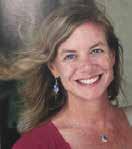
TARA BAILEY Artist
Tara Bailey is married with three (mostly) grown daughters. When she is not teaching English, she can be found somewhere outside. She loves exploring the local landscape, nurturing native plants and wildlife, riding her bike, and playing ball with her dog. She has even gotten her husband in the habit of counting bird species in their yard.

BOB SHERMAN Writer
Director of Museum Operations at the Dorchester Heritage Center (currently located in St. George), Bob is working on the project to create a new Center on an 81 acre site in Ridgeville. Creating a museum that tells the stories of the inland Low Country is a challenge he embraces. He and his wife live in Summerville where they looking forward to their son graduating Summerville High School and their daughter graduating SCAD this year.

Will and Diana Thompson met while in college at Clemson University and married in 2003. They are parents to three children (Wyatt, Ruthie, and Seth). They have years of experience serving and encouraging others. In their spare time, you can find them supporting their kids at the dance studio, the ball field, or going for a run in Summerville.



Here's to the season of new growth


Flowertown Festival, April 4th-6th with a festival Sweet Tea Trail






As Spring awakens with vibrant colors and fresh flavors, our featured recipe, the Roasted Beet and Goat Cheese Salad, embodies the season's essence. This delightful dish combines the sweetness of roasted beets with the tanginess of goat cheese, all nestled among crisp spring greens.
Ingredients
For Beets:
1 bunch beets
1 small red onion
1 cup apple cider vinegar
1 cup water
1/2 cup sugar
1/2 teaspoon sea salt
1/2 teaspoon whole peppercorns 1 cinnamon stick
5 whole cloves
For Salad:
baby arugula or mixed greens crumbled goat cheese pecans balsamic vinaigrette
Preparation
• Cut off greens and wash beets. Slice red onion.
• Place beets in a large saucepan and cover with water. Bring to a boil and cook until tender, 20-40 minutes depending on size.
• Remove from heat and allow beets to cool. Slip the skins off under cool running water.
•Slice beets or cut in wedges and place the beets and sliced onion in a large quart sized canning jar.
• In a large saucepan, add the remaining ingredients and stir. Bring to a boil over medium heat.
• Reduce heat and simmer for 5 minutes while stirring occasionally. Remove from heat.
• Pour the liquid over the beets into the jar, leaving 1/2 inch at top.
• Let beets marinade overnight.
• Assemble salad with greens, goat cheese, pecans, beets and onions and top with a drizzle of balsamic vinaigrette.

13.4 oz Flower Show Candle By Glasshouse Fragrences $55 Rhodes Boutique, West Ashley rhodesboutique.com Celebrate Mother's Day in style with this curated collection of thoughtful gifts. From elegant jewelry to cozy home decor and relaxing spa experiences, this collection exudes Southern Charm and includes something for every Mom.









Scallop Frame $100 Rhodes Boutique, West Ashley rhodesboutique.com
Celebrate the special graduates in your life and usher them into their next adventure with style. This curated collection of thoughtful gifts offer special ways to comemorate their acheivments and remind them of home.








Photograph Provided by Harriet Holman
Representative Harriet A. Holman
In a recent sit-down with South Carolina House Representative Harriet A. Holman, it became clear that her groundbreaking achievement as the first Black Republican woman in the state legislature is just one chapter in a remarkable story of service and resilience. Holman's journey to the statehouse is punctuated by numerous "firsts," but it's her unwavering commitment to putting others first that truly defines her. A retired Army Lieutenant Colonel, Holman has seamlessly transitioned from military service to public office, bringing with her a wealth of experience and a deep-rooted desire to make a difference. Holman's story serves as a powerful reminder that with faith, determination, and a servant's heart, one can overcome adversity and leave an indelible mark on their community.
Did you grow up in the Lowcountry?
I'm originally from Alabama. My husband grew up outside of St. George and we moved back there over 14 years ago when we purchased the Badham House. We currently live in Ridgeville.
What is your favorite thing about living in the Lowcountry?
The people. There is so much to love about living here but what I love the most is the people. The sense of community here is what makes this area so special. When our house burned down, so many people helped us get through it. It was a time of overwhelming loss and this community really came out and supported us.
How did your career in public service begin?
I retired from the United States Army at the rank of Lieutenant Colonel and transitioned to civilian public service. My first elected position was on the Dorchester County Council.
And from that start, you went on to make history in 2024 - that must be an amazing feeling. My daughter and I were just talking about how I have made many "firsts" in my family and my life. It's funny, I never stop to really think about it that way because I am always focused on moving forward but it's important. My hope is that my work and life will impact the lives of those who come after me.
Are you living your dream job now?
Yes, definitely. When I think about this next chapter of my life, it's all about how I can serve others, looking around me and asking, what can I do to be of service to others?
Is there a motto that you live by?
Never take no for an answer. Find a way - there is always a way to a "yes.
Who has inspired you the most? My parents. I never heard them say a bad word about anyone. They never burdened me with anything going on in the world. Of course, there were things going on in the world and they both grrew up in a time when I know they faced hardships but they kept me removed from that. In many ways, my mother was ahead of her time, particularly in how she managed my education. My parents molded me and it's still the people in my life who inspire me today.
Do you have a hobby or something you are particularly passionate about?
I'm passionate about advocating for our veterans. It actually started with a Veteran Fish Fry we hosted at the Badham house in St. George. It was important to me to bring the community together and include our Veterans. The events we held there are some of my favorite memories. The project now underway to create a veteran's facility in St. George is vital and will foster a sense of community and ensure that veterans receive the assistance they deserve. It's something I'm really proud of.

Dorchester Rd. Summerville, SC (843) 871-8080 dorchestermemorygardens.com
Offering a wide variety of marble, stone, and bronze memorials accepted in all area cemeteries. We can also provide many statuary options for private garden or cemetery display. 11000 Dorchester Rd. Summerville, SC (843) 871-2016 lowcountrymonuments.com


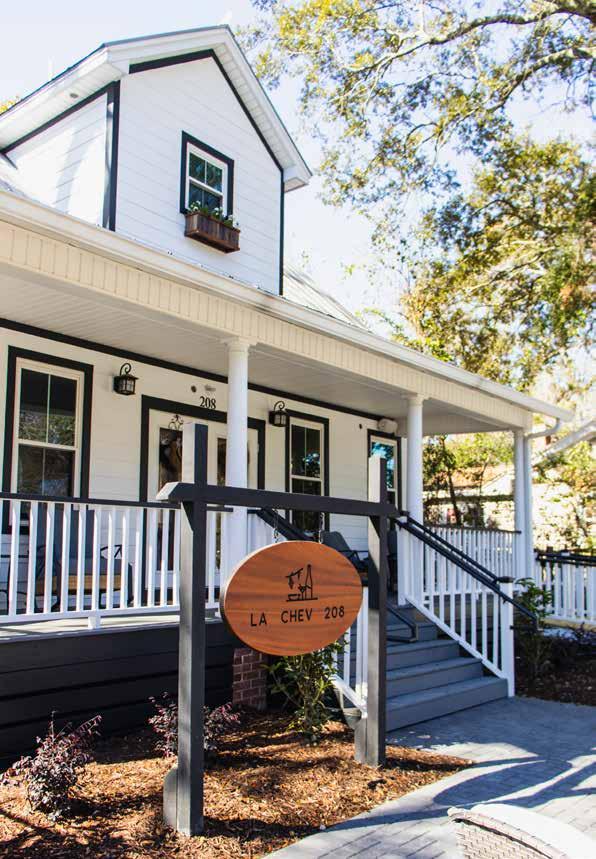
With its distinctive characteristics and delicate interplay of flavors, French cuisine celebrates high-quality ingredients and a captivating ambiance.
Jason Tucker and Richard Bihrle, the visionary owners of La Chev 208, have brought this experience to life in their newly opened restaurant at 208 E 1st N St in downtown Summerville.
Previously located in Knightsville, La Cheve has now found a new home in a beautifully restored 100-yearold house, where rustic charm meets casual elegance. This relocation allowed Chef-partner Jonathon DuPriest to craft an innovative menu rooted in French culinary traditions, highlighting fresh ingredients, full flavors, and regional staples.
A graduate of Johnson & Wales Culinary Institute in Charleston, DuPriest has been with La Chev since its inception, refining his craft and perfecting the balance of herbs, spices, and sauces that define French cuisine. His thoughtfully curated dishes showcase his mastery of the culinary arts, ensuring every plate is both comforting and elevated.



But what truly sets La Chev 208 apart is the palpable passion exuded by Tucker, Bihrle, and DuPriest - a passion that resonates in every detail, from the carefully crafted dishes to the welcoming atmosphere. Their love for what they do is evident the moment you step inside, where their dedication to exceptional hospitality and culinary excellence creates an experience that is both intimate and unforgettable.
Now open seven days a week, La Chev 208 offers both indoor and outdoor seating, fostering an inviting space for guests to connect, relax, and savor each bite. Lunch time service features the full menu indoors, while the outdoor space remains open throughout the afternoon with light plates available. Guests can also enjoy a carefully selected beer and wine list, handcrafted specialty cocktails, and a range of nonalcoholic beverages.
For those seeking a private dining experience, the two upstairs rooms accommodate up to 25 guests, making them ideal for business meetings, private parties, or intimate gatherings.
More than just a place to dine, La Chev 208 embodies the hospitality and charm of Summerville. Every element, from the menu to the ambiance, is infused with a genuine love for food and community. Here, guests are invited to be present, share meaningful moments, and indulge in the art of savoring an exceptional meal made with heart and soul. AM











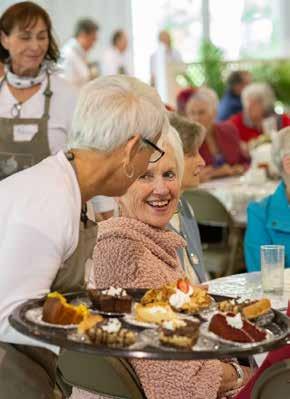

by Jenna Lachenman
Steeped in Lowcountry charm and fueled by a mission to serve others, the Tea Room tradition endures as a Spring time staple and a favorite way for locals and visitors to gather together to enjoy a good meal for a good cause.
As spring arrives in the Lowcountry, a beloved tradition comes alive. The Church Tea Room, a uniquely Southern phenomenon, transforms hallowed halls into bustling cafés, where the aroma of home-cooked delights mingles with the spirit of community and philanthropy.
This beloved custom traces its roots to 1948 at Old St. Andrew's Parish Church in West Ashley. What began as a simple act of hospitality - church ladies sharing their packed lunches with curious passersby - evolved into the area's first tearoom in 1954, setting the stage for a tradition that would soon flourish
throughout the region.
Today, churches like St. Paul's Anglican in Summerville carry this torch with pride. For two weeks each spring, St. Paul's light-filled Doar Hall metamorphoses into an enchanting dining experience. Tables adorned with fresh flowers and crisp linens welcome up to 220 guests at a time, while a gift shop showcases local artistry and homegrown plants.The menu traditionally features well-loved Lowcountry cuisine. Traditional favorites like tomato pie, she-crab soup, and okra soup vie for attention alongside fresh salads and sandwiches. Homemade desserts take center stage and of course there are a variety of hot and cold teas served. In 2023 alone, St. Paul's Tea Room raised over $90,000 for various ministries and missions.
Tea Rooms serve up more than just delectable fare for a good cause, they also offers a unique glimpse into the rich history and architecture of churches in the Lowcountry. Visitors to Old St. Andrew's, for instance, can explore the oldest surviving church structure south of Virginia between bites of shrimp salad and sips of sweet tea.

















From late March through early May, these pop-up tearooms become the cornerstone of the Lowcountry's social calendar. Locals and tourists alike flock to church halls and gardens, drawn by the promise of Southern hospitality and the opportunity to contribute to worthy causes.
As spring paints the Lowcountry in vibrant hues, the Church Tea Room tradition stands as a testament to the enduring power of community, hospitality, and a perfectly brewed cup of tea. It's more than a meal; it's a celebration of heritage, a gathering of friends old and new, and a delicious way to make a difference. AM
Tea Room events offer a wonderful opportunity to experience Lowcountry hospitality, enjoy delicious food, and support local charities and outreach.
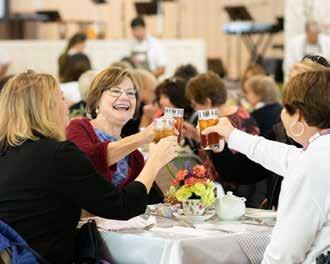
Springtime Tearooms
St. Paul's Anglican Church Tea Room & Gift Shop
Dates: March 17-21 and March 24-28, 2025
Time: 11:30 AM - 2:00 PM
Location: 316 W. Carolina Avenue, Summerville, SC 29483
St. Philip's Church Tea Room Tradition
Dates: May 5-9, 2025
Time: 11:30 AM - 2:00 PM
Location: 142 Church Street, Charleston, SC 29401
Grace Church Cathedral Tea Room and Church Mouse Boutique
Dates: May 27 - June 1, 2025
Tea Room Time: 11:00 AM - 2:00 PM
Church Mouse Boutique Time: 10:00 AM - 3:00 PM
Location: Grace Church Cathedral, Charleston, SC
Old St. Andrew's Tea Room
Dates: March 24 - April 5, 2025
Time: Not specified in the search results
Location: Old St. Andrew's Parish Church, Charleston, SC
Attire is casual but feel free to don your widebrimmed hat for the occasion!
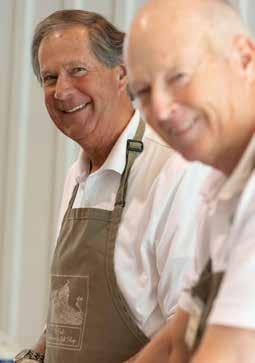

With the right teacher, we can all learn a few new tricks.
by Susan Frampton
It's a cold Saturday when my friend Jennifer invites me to tag along on one of her regular Saturday morning outings. She has told me a little about our destination, and I look forward to the day ahead. Her assistant stands at the ready. He doesn't need to psyche himself up, grab a Starbucks, or pause at the water cooler for the down low on the latest celebrity gossip. He takes the ramp down from the back of her car, determines his current location, gives himself a good shake, and is ready to roll. Samson is a therapy dog, and his goal for today is to make some people happy. He's very good at it. Aptly named, he is a handsome, strong, muscular beast boasting long satin ears and a silky, flowing coat.
When we arrive at a local Senior Living Community, it is lovely and welcoming. Inside, several very different neighborhoods reside beyond the doors, each tailored to its residents' needs. In the lobby, residents anxiously await our arrival, and Samson's tail starts wagging. He's ready to roll, and we've yet to clear the Welcome mat before smiles split their faces and fingers beckon. Each resident has their own individual greeting for the big dog, and he responds in kind. He recognizes them as a group, but it is clear that he sees each one.
In a setting like this, it is easy for us to overlook the individual and
paint the group with a broad brush – looking but not really seeing the person in front of us. They are all touched by the hand of time, and it has been kinder to some than others. By virtue of their residence here, they all need some form of assistance. Some need only the company of others and to live fairly independently in a safe environment. Others require some level of assistance with the daily activities of life. We tend to look at them and simply see a group of old and sometimes eccentric people. In doing so, we cheat them and ourselves of the experience of sharing who they really are. If we look more closely, we find they are fascinating captains of industry, teachers, world travelers, collectors, and experts in specialties we can only imagine. They may look drastically different now, but those people are still inside them, and we should make it our mission to discover them.
There is Tom, a gruff bear of a man who has trouble getting around and is not happy about it. Tom is from the Eastern Shore of Maryland and recently auctioned off his impressive collection of Ward Brothers decoys. He's surprised that I happen to know a little about the Ward Brothers. I'm surprised to learn of his collection of the rare and valuable antiques. Fascinated, I wonder how long it has been since he's talked about them.








Ken is an avid reader, seldom seen without a book tucked under his nose. His favorites are espionage and the manipulation of secret assets by world powers. He seems delighted to tell us the intricacies of each book's plot and shares with us his favorite author. Ken vividly describes the current book. Jen subsequently seeks out the author and acquires a few of the spy novels. She reports that they are every bit as good as promised. Though I did not learn anything further about Ken, I might guess his background was in academics or law. In my mind, he became The Professor, and I look forward to finding out if I saw him correctly.
Giggles arise from the ladies gathered in a sitting area that is obviously their usual spot. They flirt like teenagers to win the attention of Samson and his furry friends. Smartly dressed, wearing pearls and, in one case, a hat, it was easy to see these ladies as the standard setters in whatever endeavor they had once played a leading role. I was a little embarrassed to be dressed casually and pretty sure they knew Levi as the founder of one of the Tribes of Israel, not as the dude who pioneered the jeans I was wearing.
When we headed to the Memory Care community, I remembered a woman named Patty, who I met when my dad was in hospice care. She was a striking woman who confidently walked the halls, stopping visitors for long lectures she conducted using word chaos. She once entered Dad's room and absconded with my son-in-law's lunch. We later learned that she had been the CEO of a Wall Street brokerage firm. For the first time, we saw Patty in a different light. It changed the way we looked at her.
Samson led me to Kathy, who reportedly did not care for dogs, though she couldn't say why. Jennifer had seen through her grouchy demeanor and, on a previous visit, gifted her with a stuffed dog that became her constant companion. Reversing her aversion to the four-
legged visitors, she leaned into the big dog and patted his head. She might not remember yesterday, but Samson gave her today.
As Samson approached, she seemed to come alive, and when he put his nose to hers, she laughed out loud. At that moment, she was seen and celebrated with unconditional adoration. It was a lovely moment.
A frail resident lay sleeping on the sofa, curled around herself and unresponsive to our greeting. She did not move or acknowledge us, but across the room, I saw her fingers tap her leg in the universal "here boy" gesture. As Samson approached, she seemed to come alive, and when he put his nose to hers, she laughed out loud. At that moment, she was seen and celebrated with unconditional adoration. It was a lovely moment.
It's sad that, as a society, we are guilty of assuming that what we casually observe in the elderly is all there is. Our time would be far better spent looking beyond the stereotype to see the person who they were, are, and always will be. We'd all be better people if we followed mighty Samson's example and celebrated all three.
Good dog, Samson. Thanks for teaching us all a few new tricks. AM



by Tara Bailey
It’s officially spring as you’re reading this, and unofficially as I write this, despite that this morning the groundhog - THE groundhog - has by shadowy fiat declared more winter. Even so, this afternoon we ignored Phil and his top-hatted handlers and ate lunch on the deck to absorb sunshine, ponder our plantings, and listen to the birds discuss the best time to start a family. “What a dumb groundhog,” we said, sipping iced water and fanning our faces.
I have never been a fan of Groundhog Day because its prognosis always gives me mild anxiety. I am always eager for springmy favorite season - but its early arrival is usually a fake-out, portending bloom-killing frosts and urging migratory birds to leave the party before it’s over. On the flipside, six more weeks of winter always sounds dreadful, especially after this past January’s surprise epidemic of cabin fever. Maybe I just put too much stock into things I can’t control, like the weather and groundhogs (which, by the way, are also called ‘whistlepigs’). But if I don’t like Groundhog Day, I really, really hate Groundhog Day.
I am, of course, referring to the 1993 movie starring widelyloved Charleston resident Bill Murray and South Carolina native Andi MacDowell. Though my family has driven by what was rumored to be Ms. MacDowell’s house just to say, “There’s Andi MacDowell’s house!” and I am a huge fan of Murray in his other films - especially that other one in which he costars with a rodent - I find the time loop plot device of Groundhog Day tedious. This is most likely because I am an impatient person.
To point, I find myself smiling like Jack Nicholson with writer’s block every time I ask my adult house mates (i.e., family) to please put dirty dishes in the dishwasher. I close my eyes and do breathing exercises when a student asks me the directions of a test after I’ve printed the directions of the test on the test and also have read aloud the printed directions of the test before actually giving the test. See how tedious that is?
I would rather drown in sand than sing “Ninety-Nine Bottles of Beer” and look for the nearest exit before anyone gets beyond the first day of Christmas. At church I count the number of refrains in the hymns and sigh if there are more than three. I get that the repetition is comforting to many, but I’m more of a sermon gal, myself.
At the start of each new year I pledge to work on my lack of patience, or at least how I respond to it. Ironically, I must repeat this commitment at the start of Lent because six weeks into the year there’ s usually at least one person who has endured my sarcastic, passive-aggressive tone when my cup of tolerance hath runneth over. I’m aware enough to know that it is those in my orbit who must have patience with me, which humbles me enough to reset and try again; my empty cup will then once again have room for my husband’s mastering of a new song on his guitar - for a few extra minutes, anyway.
I’ve actually become far more patient as I’ve gotten older. Things that are mild annoyances to me now seemed catastrophic in my younger years, things like shoes multiplying in the den and clothes languishing in the dryer for days. I was impatient when my children didn’t want to wear the clothes I


















had bought them or do their hair the way I preferred or participate in activities I believed would better their lives. There were many moments wasted in disputes over an outfit or whose turn it was to unload the dishwasher. I’m thankful that at some point I realized that my frustration with others was actually not with them but my inability to control everything - and everyone - around me.










In Groundhog Day, Bill Murray’s character, Phil Connors, is stuck in a loop of his own making. His own impatience and contempt for those around him leave him in trapped in a pattern of bewilderment and panic. The loop turns out to be a gift to Phil as he learns which events he can control and which he can’t. This acceptance allows Phil to use his time and energy to benefit others, thus breaking his cycle of cynicism and freeing him of his repetitive life.
I broke my own loop when my kids became young adults. My husband and I emptied our nest and suddenly had a lot of time together. This phase of life could either amplify our mundane frustrations or negate them. We suddenly felt like teenagers with the keys to the car, so it was easy to forgive our trespasses when every night was date night. We nonetheless missed our kids and their presence in the house, so piles of clothes and family room takeovers are now welcomed on holidays as long as it means they are home for a little while. Love really does overcome all.
I figure we all put up with a lot from each other. But we also get a lot more from each other than we deserve. I’m glad I was able to learn patience without having to have a Groundhog Day experience, or even having to watch Groundhog Day. My tolerance for repetitiveness is still low, though higher than it used to be. But I am growing in my patience each day. Besides, my husband is getting pretty good at guitar. And l happen to like the song he’s working on now, which is great because I’m going to be hearing it for a while.

by Will Thompson
One of the most miserable weeks of my life also had a tremendous life lesson for our faith in hard times and how our presence can bring comfort to those in need. It wasn’t miserable because of what I was doing. It was miserable because it was in July on John’s Island and it was outside both day and night.
In early July 2016 I served as an adult leader for my then 8 year old son at a three day Cub Scout camp at Camp Ho Non Wah on John’s Island. If my memory serves me correctly, the night temperature never got below 90 degrees and there was no wind at our campsite. At this camp, you sleep in A-frame canvas tents on raised platforms. There are no cabins with screened windows and ceiling fans! I don’t mind being outdoors with all the things that come with it, like bugs and animals. I do have my limits though when there is also oppressive heat, lack of sleep, and a lot of 7-9 years old—some of which are spending their first night in the woods.
It was in this setting that God gave me a real life picture of His comfort in our time of trouble.
My son’s tentmate was on his first overnight camping trip without family. If you’ve ever been on a trip like this with young kids, you know that kids are excited and are having fun while the sun is still up. It’s when the sun goes down, when you can’t see beyond the illumination of your flashlight, fear creeps in.
My tent was right next to my son and his tentmate. After getting all the boys settled, the adults gathered around the picnic table in the center of the camp under the glow of a few lanterns. We recapped the day and dis-
cussed plans for the next day, but the main purpose of our meeting was to give the boys a chance to fall asleep while we still had some light on.
After an hour, it seemed like all the boys were asleep. We turned off the lanterns and retired to our individual tents. I wasn’t expecting to get much sleep due to the heat, but somehow was able to doze off… until.
I was stirred from my slumber by sniffles and tapping on the frame of my cot. My son’s tentmate was standing at my feet just outside my tent, scared and unable to sleep. I got up and helped him settled back into his tent. I grabbed my camp chair and sat just outside their tent so he knew I was right there. After 15-20 minutes, I was confident he had gone back to sleep, so I returned to my cot to make another attempt at getting rest. I’m not sure I fell asleep this time or not, but it wasn’t long before this young man had returned to the foot of my cot. He was still scared and told me that he had woken up to see if I was still sitting in my chair. When he realized I was gone, he got up again.
I got him settled again and told him that I would be in my chair where he could see me for the rest of the night. I didn’t get much sleep that night, but he never got up again. All he needed was proof of my presence. It wasn’t enough that I was one tent over, he needed the visible assurance that I was with him in the darkness.
We all have moments where fear enters our lives and we need the assurance that all will be okay. God promises that He is with us in all our moments, especially our darkest ones. Psalm 23:4 states, “even though I walk through the valley of the shadow of death, I fear no
evil, for You are with me; Your rod and Your staff, they comfort me.” Joshua 1:9 reads, “be strong and courageous! Do not tremble or be dismayed, for the Lord your God is with you wherever you go.” God is always present in our good times and bad. He reminds us of this throughout scripture. For many of us, His word is sufficient. Sometimes, though, it helps when His word is made alive by others in our midst.
My experience on this hot summer night reminded me that God is with us, always. I also learned a valuable lesson about being present. This young man was terrified on his first ever overnight camping trip. It could have been the dark, the sounds of the woods, or a combination of both. He needed more than just the belief that he would be ok. He needed the presence of someone with him.
Presence is a difference maker. The ministry of presence is simply being “with.” Oftentimes we feel like we have to say something to bring comfort to others. Sometimes we do, but more often than not, just being with them makes the biggest impact. My young friend didn’t require my words, just my presence. He knew I was with him and that was enough.
Presence requires something of us, but presence gives more than it takes. Being presence means we must give something up. I gave up sleep and relative comfort to be present for that camper, but 8 years later I remember making a difference and can envision God’s presence through the image of me sitting in that chair all night. I will never forget this lesson, which makes the short term sacrifice I made that night worth it.
Who are those in our lives that could use our presence that will bring them assurance of the truth that God is also with them? The scared, the anxious, the lonely? I think of seniors, widows, and children. What about the homeless or those falling on hard times? Are there people you encounter every day that could use a little of your time give to just be present with them? Do you make an effort to see them? AM

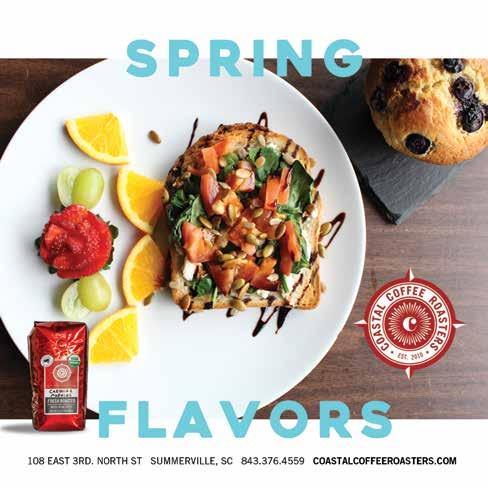



Novelist Lorna Hollifield crafts an atmosphere of elevated suspense and richly textured characters
The extraordinary life of Lowcountry native daughter is an inspiring tale of a woman ahead of her time, whose legacy of service endures.
The season's colorful fruits add a burst of local flavors that light up every bite
Lowcountry
an atmosphere of elevated suspense, richly textured characters, and the soulful pull of Southern storytelling

Hollifield has always known she was a writer. Before she could even form letters on a page, she scribbled with a pen and paper, lost in stories only she could see. Growing up in the mountains outside Asheville, North Carolina, she spent her days absorbing the world around her, learning not just from school but from the storytelling influence of her grandmother.
"My grandmother taught me all day long," Hollifield recalls. "She read to me often, and we watched soap operas together. I think that storytelling was always a part of my DNA because of her."
Her love for literature and stories never wavered. Even as a self-described “bookish cheerleader” in high school, she knew there was only one path for her. A teacher once wrote in her report card, I think Lorna is an author. That declaration became a prophecy.
However, the journey to becoming a published novelist was anything but easy. Hollifield attended UNC Asheville, where she eagerly consumed literature courses but ultimately left before finishing her degree. "I was a proud college dropout," she laughs. "I just couldn’t bring myself to finish the math. And in the back of my mind, I didn’t want a 'Plan B.' I wanted to write."
And write she did. It took ten years to land her first book deal, with Tobacco Sun serving as her breakout novel. The road to publication was filled with rejection, multiple agents, and setbacks, but she never let them stop her. "When you’re a writer, those things don’t stop you," she says. "I will write books until the day I die."
While her roots are in the Appalachian Mountains, Hollifield always felt an inexplicable pull toward the South Carolina Lowcountry. When her husband’s job brought them to Summerville, it didn’t take long for her to know she had found her forever home.
"Summerville grabbed my soul," she says. "It’s authentic, it’s not planned, and it has a rough edge to it. I really feel like the Lowcountry is my place in the world."
It’s
more than just a place to live; it’s the backdrop for her stories. The South, its culture, its landscape, its deep sense of history, weaves itself into every book she writes.
It’s more than just a place to live; it’s the backdrop for her stories. The South, its culture, its landscape, its deep sense of history, weaves itself into every book she writes. "Climate is everything," she muses. "I really believe that."
Reading Hollifield’s work, you’re immediately drawn in by her characters, each one a testament to her gift for crafting intricate inner worlds that are just as compelling as the stories they inhabit. Hollifield’s writing process is deeply characterdriven. "I see characters first," she explains. "They show up, and they start talking. Then the plot comes."


Her stories demand space to unfold, developing into layered, suspenseful narratives that explore family ties, personal struggles, and the complexity of the human spirit.
Her first novel, Tobacco Sun, was born from a character named Jimmi-Lynn who simply appeared in her mind. Music often inspires her writing as well, triggering new ideas and emotions that fuel her storytelling. "I love to write to music. It stirs something up for me," she says.
Unlike many writers who dabble in short fiction, Hollifield has never written a short story. "I see the long haul or I see nothing," she admits. Her stories demand space to unfold, developing into layered, suspenseful narratives that explore family ties, personal struggles, and the complexity of the human spirit.
Her latest book introduces Eliane Pangolin, a 27-year-old struggling writer and wannabe dancer fighting an uphill battle with obsessive-compulsive disorder, a character who, for the first time, carries pieces of Hollifield herself. "She’s far more troubled and has led a more chaotic life than I have, but there’s an affinity there. I think that character was me working things out in a very exaggerated manner.” I thought, What are the things I’ve been scared to write about? That became the heart of the book."
Hollifield’s novels blend elevated suspense with elements of family sagas, all set against the Southern landscape. Her latest book, coming out this spring, is no exception. "It’s a coming-of-age story with a huge suspense element - a stalker being stalked," she teases. "There’s an absurdity about it, capturing the chaos of early adulthood, which, to me, is one of the most turbulent times of life."
The Lowcountry writing community has embraced her, and she is passionate about giving back. "It’s important to support other writers," she says. "Lowcountry authors are very supportive of each other. We help each other."
Hollifield doesn’t separate her writing life from the rest of her world. "Every part of my life is integrated. I don’t compartmentalize," she says.
Her writing schedule is fluid. She writes mostly at night or whenever inspiration strikes, but she’s disciplined. "I don’t procrastinate," she insists.
As for her literary influences, Hollifield counts Taylor Jenkins Reid, Stacy Willingham, Mary Alice Monroe, and Patti Callahan Henry among her contemporary favorites. But her all-time love belongs to F. Scott Fitzgerald and Ernest Hemingway. The book that first made her want to write? Walk Two Moons by Sharon Creech. "I read it in the fifth grade, and I remember thinking, She understands what makes people tick. I want to do that."
With a new book on the horizon, Hollifield is eager to connect with readers. "Follow me on social media," she encourages. "Reach out and say hi—I’ll say hi back."
For Hollifield, writing isn’t just a career; it’s part of her very being. "Writing is one of my appendages," she says. And as she celebrates the launch of her next novel, she knows there’s no place she’d rather be than in the heart of Summerville. "I found myself here. I found my tribe. And this is where I’ll stay. Climate is everything.” AM
Connect with Lorna on Instagram @lornahollifield

Bright Little Girls by Lorna Hollifield
A wannabe author. A narcissistic musician. A serial killer. An average girl. Someone tells the story. Someone is the story. Someone steals the story. Someone won't make it out of the story.
Eliane Pangolin isn't like anyone her mysterious follower has ever met. She's a 27-year-old struggling writer and wannabe dancer fighting obsessive-compulsive disorder while coping with her connection to a brutal crime. When she isn't defying a restraining order by writing letters to an old friend, she's trying to navigate feelings of both betrayal and beguile toward her lifelong male best friend. Everything in her life pulls from two directions, creating a tug-o-war she isn't sure to escape.
Hollifield masterfully paints a character of conflicting attributes, a girl who lies underneath fake palm trees in her living room, but who also has an old soul that she swears once rubbed elbows with the Fitzgerald's on some Parisian street. Broken and brilliant, antagonizing and alluring, readers will love following Eliane just as much as her narrator in the shadows.
A story about art, obsession, guilt, crime, and lust for… everything, Bright Little Girls is about learning to cope by finding the self, the most elusive character of all. This story will seep into the soul then invite it to come out and play.
words by Robert Sherman
The extraordinary life of Lowcountry native daughter Kathryn Dollason unfolds like a Hollywood script— an inspiring tale of a woman ahead of her time, whose legacy of service endures.

On March 15, 1991, an unseasonably chilling breeze made the flags of the Honor Guard snap and flutter. The Army full honors funeral procession moved solemnly through Arlington National Cemetery. The rhythmic click-clack of the soldiers’ heel plates kept time with the muffled drums of the Army band, while the quiet rumble of the caisson, carrying the casket of the honored dead, matched its own cadence with the six glossy black draft horses pulling it. An eight-man casket team marched alongside, their faces solemn and composed.
The procession advanced along MacArthur Avenue, descending the hillside to Section 68, within sight of the Pentagon’s seemingly endless windows. The soldiers halted as family and friends arrived, their cars pulling up to discharge somber passengers. The mourners settled into place—family seated close to the gravesite, distant acquaintances standing at the rear, quietly adjusting their positions to witness the solemn tribute.
Once the casket was carefully placed atop the grave’s mock-up, the bearers silently lifted the United States flag draped over it, holding it taut and level. A chaplain stepped forward, speaking of the fallen soldier’s life, their sacrifices, and unwavering service. After a brief moment of silence, the firing party, stationed among rows of white marble headstones, responded to whispered commands. Their rifles barked a final salute—seven men, three volleys, twenty-one shots in tribute.
The ceremony, executed with the same reverence as for any soldier who had faithfully served their country, honored a life not marked by battlefield heroics but by compassion and care in the most harrowing circumstances. Lieutenant Colonel Kathryn Dol-
lason Hannigan was laid to rest in Arlington National Cemetery in recognition of her long service as a United States Army nurse. She had not only treated wounded soldiers but had also cared for her fellow nurses as they endured more than three years of captivity in the Philippines during World War II.
Born near Eutawville, South Carolina, on February 13, 1913, Kathryn, known as Katie Lee in childhood, was one of seven children raised by “Bub” and Jessie Mims Dollason. Her father, a machinist, worked tirelessly, taking on blacksmithing and well drilling, whatever it took to feed his family. She attended public schools, completing the tenth grade in 1929, just before the stock market crash plunged the nation into the Great Depression.
Like many in the rural South, Kathryn sought work that could take her beyond the hardships of home. Inspired by her older sister Carolyn, a nurse who had graduated from the University of Georgia, Kathryn followed a similar path. She had taught “Home Hygiene” at the local Methodist Church’s Wesley House and pursued nursing school in Augusta, Georgia. Shortly after graduating, she joined the Army Nurse Corps and was stationed at Fitzsimons Army Hospital in Aurora, Colorado. Known for treating tuberculosis patients, the hospital had narrowly avoided closure two years prior and was now undergoing expansion, fueled by Franklin Roosevelt’s Works Progress Administration.
Commissioned as a Second Lieutenant in September 1936, Kathryn was training in Colorado when tragedy struck: her father passed away in April 1939, followed by her mother that September. With her family ties to Eutawville unraveling, her career with the Army became her anchor.
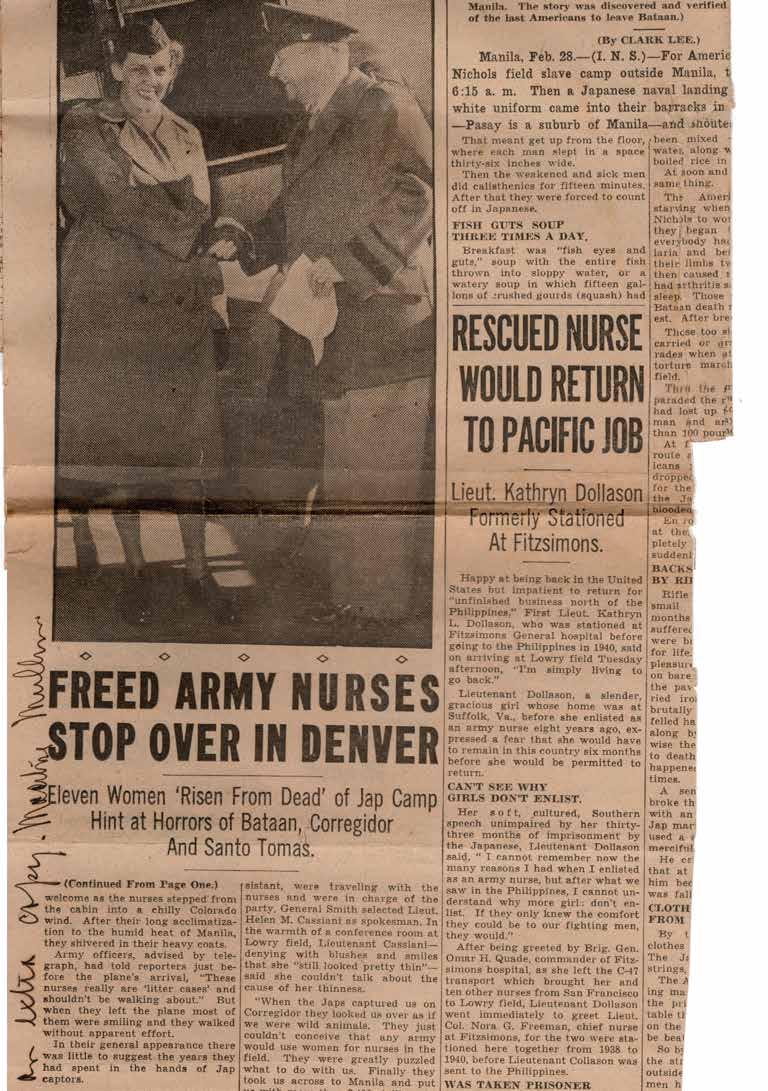
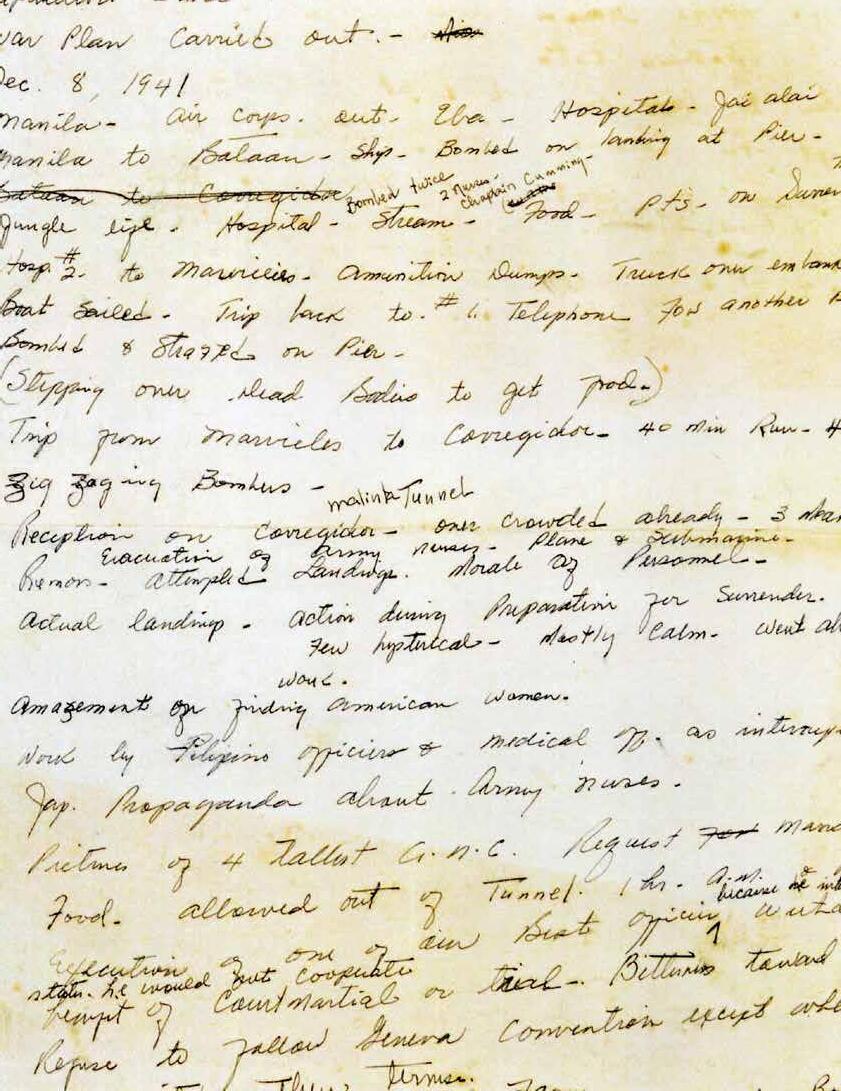
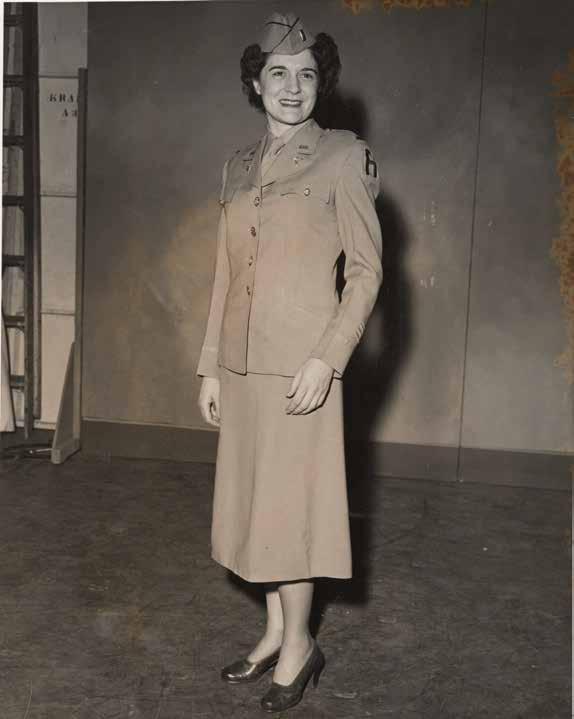
The 1930s brought significant change for the Army Nurse Corps. Though nurses were granted relative rank from Second Lieutenant to Major in 1920, they were still addressed as “Miss” rather than by rank, and their pay remained half that of their male counterparts. By the late 1930s, they were allowed detached duty with full pay to attend advanced courses in anesthesia, psychiatry, and other specialized fields. By 1940, the Army Nurse Corps had grown to 942 members.
Kathryn’s career took an unexpected turn when she received orders for the Philippines, a coveted assignment often viewed as a tropical paradise. But war loomed on the horizon. On December 7 and 8, 1941, Japan launched a devastating attack on Pearl Harbor and invaded the Philippines. American and Filipino troops, underprepared and outnumbered, retreated to the Bataan Peninsula and Corregidor Island. Supplies dwindled rapidly.
General Douglas MacArthur was ordered to evacuate, vowing, “I shall return.” Five nurses left with him, but Kathryn and her unit remained, beginning more than three years of captivity.
For over 70,000 American and Filipino troops, the ordeal started with the infamous Bataan Death March, a grueling, forced trek over 60 miles. It is estimated that 650 American and 15,000 Filipino troops perished. Lieutenant Dollason and her unit were transported to the University of Santo Tomas, a 48-acre compound that became an internment camp. By 1943, over 5,000 people were held there. To alleviate overcrowding, men were sent to a separate camp in Los Baños, along with Navy nurses who staffed a hospital.
Conditions in the camps were brutal. Hygiene was nearly nonexistent, and rations dwindled to barely 1,000 calories a day. The nurses continued their work,
caring for the sick and wounded despite their own suffering. In September 1944, American planes began bombing Manila. As U.S. troops advanced in early 1945, fears grew that Japanese forces would massacre prisoners. On February 3, 1945, the sounds of gunfire and American tanks echoed through the compound. Kathryn Dollason and 66 other Army nurses were finally freed.
When she had arrived in the Philippines, Kathryn was a tall, robust woman—five foot eleven and 160 pounds. Upon liberation, she weighed just 85 pounds.
The “Angels of Bataan and Corregidor,” the Army nurses who endured captivity, achieved an extraordinary feat: not a single one of them perished during their three years of internment. When General Jonathan Wainwright, who had surrendered the Philippines and endured captivity himself, returned to New York to a hero’s welcome, he was met by three of the Santo Tomas nurses. Taking their hands, he asked, “How many got through?” Standing beside Lieutenant Dollason, Lieutenant Adolpha Meyer, her voice trembling, replied, “There were 67 of us, sir, and oh, it’s good to see you.”
Kathryn remained in the Army, one of only 8,500 nurses to stay on after the war, out of a wartime peak of 57,000. She retired as a Lieutenant Colonel on March 24, 1958.
Today, nearly 229,000 women serve in the U.S. military, with over 17,700 Army officers among them. Kathryn Dollason’s post-military life was just as remarkable. She settled in Manhattan, married a dashing CIA officer she met on the Ed Sullivan Show, and traveled extensively. She lived on a farm in Valley Forge, Pennsylvania, and spent summers at her home in Key Colony Beach, Florida. She passed away on March 10, 1991.
Her life story reads like the script of an unbelievable Hollywood film, but for Katie Lee of Eutawville, South Carolina, it was simply a life of service, one well and honorably lived. AM
Words by Robert Sherman, Director Dorchester Heritage Center, Inc.
Learn more about Dollason and the rich history of Dorchester County by visiting the Heritage Center online at dorchesterheritagecenter.com or in person Tue - Fri 9:00 am to 4 pm at 101 County Rd S-18-61, St George, SC


FRESH FROM LOCAL FIELDS TO YOUR FAVORITE FARMERS MARKETS, THE SEASON'S COLORFUL FRUITS ADD A BURST OF FLAVORS THAT LIGHT UP EVERY BITE
1 loaf challah or braided brioche bread, sliced into 1 inch thick slices
1 jar blackberry preserves 6 large eggs, beaten 1 1/2 cups whole milk
16 ounces whole milk ricotta cheese
2 tablespoons maple syrup
1 tablespoon vanilla extract zest of 1 lemon
1/2 teaspoon kosher salt
4 tablespoons salted butter, melted
1 cup fresh blackberries
1/2 cup heavy cream Powdered sugar and maple syrup, for serving
Grease a deep medium sized baking dish with butter.
Slice each piece of bread in half, cutting almost all the way through, but leaving a 1/2 inch at the bottom.
Spread blackberry jam inside the cut, then press to close.
In a large bowl, whisk together the eggs, milk, 1 cup ricotta, maple syrup. vanilla, lemon zest, salt, and butter.
Submerge each piece of bread into the egg mixture, allowing the bread to sit a minute and soak up the eggs.
Arrange the bread in the prepared baking dish.
Pour 1/4 cup of the remaining egg mixture over the bread slices. Cover and place in the fridge for 1 hour or overnight.
When ready to bake, preheat the oven to 375 degrees F.
Sprinkle half of the blackberries over top the toast, transfer to the oven and bake for 45-50 minutes or until the French toast is golden and crisp.
If the tops of the bread begin to brown too quickly, loosely cover the French toast with foil. Meanwhile, in a mixing bowl, whip the cream until stiff peaks form. Gently fold in the remaining 1 cup ricotta.
Stir in 1 tablespoon powdered sugar, if desired. Top warm toast with whipped ricotta, fresh berries, and maple syrup.


Ingredients
1 1/4 cups Graham Cracker Crumbs
1/4 cup sugar
1/3 cup butter, melted
1 small can sweetened condensed milk
Juice from one lemon
1 can frozen lemonade
12 oz Cool Whip
1/2 cup fresh blueberries
Preparation
In small bowl, stir together crumbs, sugar and melted butter.
Spread crumbs evenly in one large pie plate or two smaller pie plates and press onto bottom and sides. Refrigerate for an hour or until firm.
Mix condensed milk and lemon juice together.
Add frozen lemonade and Cool Whip and mix well in electric mixer. Place pie filling in graham cracker crust.
Refrigerate at least 4 hours. Top with fresh blueberries.
Ingredients
For the Turnovers:
1 box puff pastry dough (2 sheets)
1 cup fresh blueberries
2 tablespoons sugar
1 tablespoons cornstarch 1/4 cup water
For the Egg Wash:
1 large egg
1 tablespoons water
For the Glaze:
1 cup powdered sugar
2 tablespoons skim milk 1/2 teaspoon vanilla extract
Preparation
Thaw puff pastry dough according to package directions. Preheat oven to 400 degrees.
Line a baking sheet with parchment paper. In a small sauce pan, combine blueberries, sugar, cornstarch, and water
Carefully stir together over medium heat for 2-3 minutes until bubbling nicely and thickened
Remove from heat and let cool. Cut pastry dough into 4 squares per sheet
Put 1-2 tablespoons of filling in the middle of each square. Whisk together water and egg to create and egg wash.
Brush egg wash over each edge of the pastry dough and fold in half to make a triangle. Press edges together with fingers. Pierce the top of each turnover with a fork or knife to let steam escape.
Place on prepared baking sheet and repeat with remaining dough and filling.
Brush remaining egg wash over the tops of turnovers.
Bake for 15-20 minutes until golden brown.
Allow to cool completely. Whisk together powdered sugar with additional glaze ingredients, add more liquid or more sugar to reach desired consistency.
Drizzle glaze over each turnover and serve.


Ingredients
1/2 lb pineapple
1/2 lb strawberries
1 roma tomato, diced
1/2 of a red onion, minced
1/2ofa jalapeno,minced
1/4 cup fresh cilantro chopped
Juice from one lime
1/2 teaspoon salt
Whipped cream cheese
Baguette
Pepper to taste
Preparation
Dice pineapple into a small, 1/4inch pieces. Place into a large mixing bowl.
Hull the strawberries, and dice into a small, 1/4-inch pieces.
Add to bowl with pineapple. Dice the tomatoes into a 1/4 inch dice as well and toss with pineapple and strawberries.
Add minced onion and jalapeno to bowl along with cilantro, lime juice, and salt. Stir to combine. Add pepper to taste.
Slice baguette and toast in toaster oven, then top with whipped cream cheese and a spoonful of salsa.
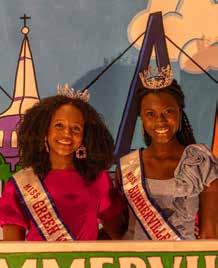

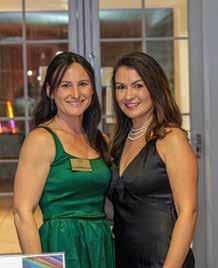

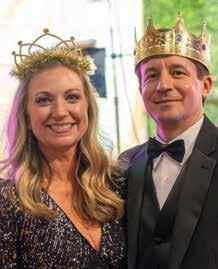

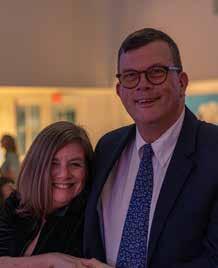





by Ellen E. Hyatt
I.
Just a stone’s throw away–that’s how close Spring can feel here even in January, when pots of pansies bloom their best and vinca spills vines from a forgotten place.
II.
A woman, who should know better, wears a tight T-shirt, best suited for back yards. Printed across her chest, the message “Spring is here!” And perched strategically, two birds.
III.
If we feel a bit of Whitman’s sad “untold want,” children climbing a tree nearby can put us in sync. And we are ready “to seek and find”—like hummingbirds whose time has come to travel the Carolinas and beyond.
IV.
Flowers, everywhere—as though stars from the sky fell to earth to bud, burst, and bloom. Frilly-flashy azaleas in red and pink are as daring as the ruffled skirts in a Can-Can line.
V.
Mourning doves will continue cooing, but don’t be fooled . . . Spring— like that love, that life, that visit to Paris— will be over much too soon and so much farther than just a stone’s throw away.

